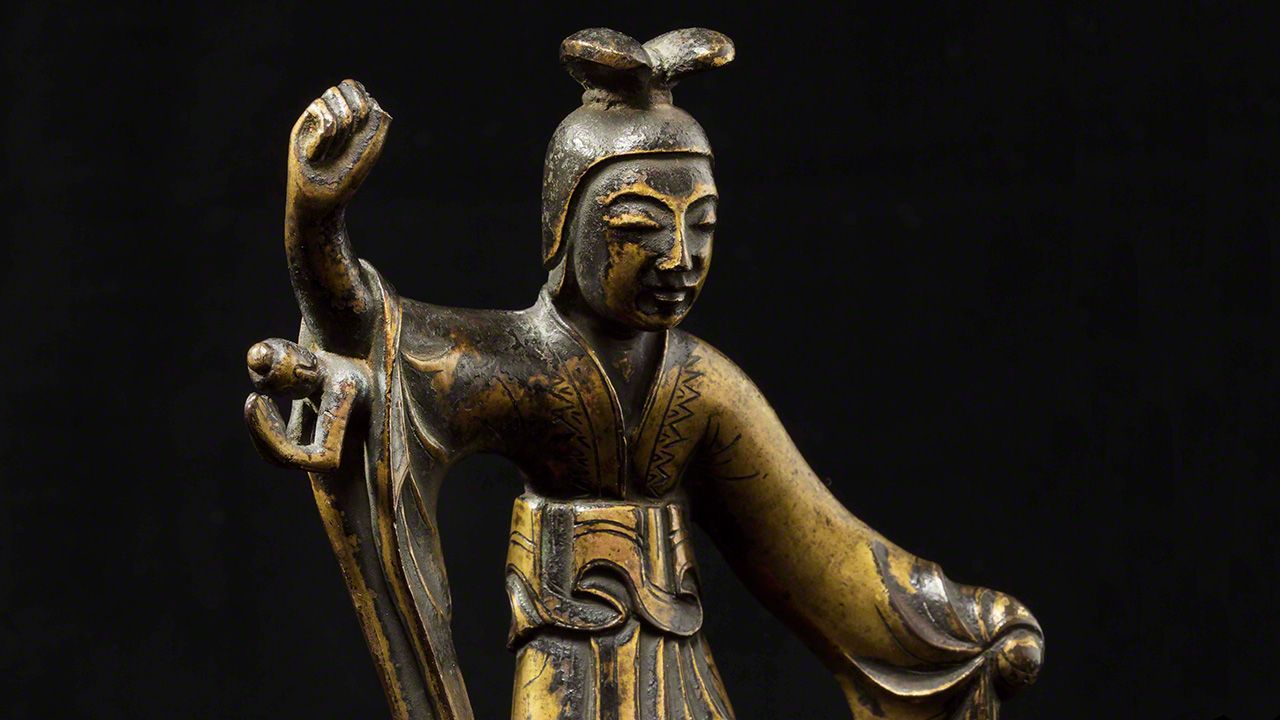
Mystical Motherhood: Statues of Maya and Heavenly Beings
Culture Arts- English
- 日本語
- 简体字
- 繁體字
- Français
- Español
- العربية
- Русский
These images depict the world-changing moments when Shakyamuni was born from his mother’s right side.
The Buddha’s mother, Maya (or Māyādevī), seems to be dancing. Looking on are three heavenly attendants and the baby Shakyamuni, who will go on to create one of the world’s major religions.
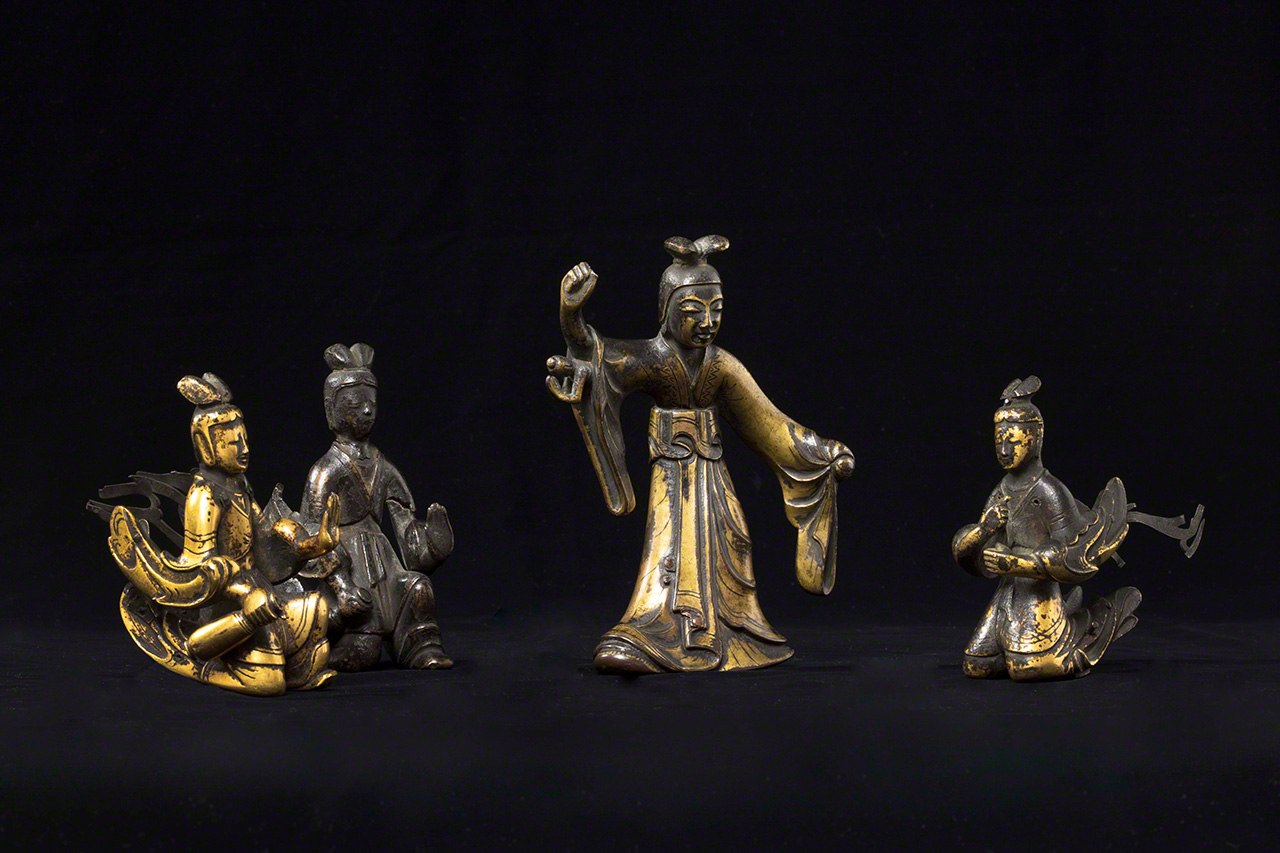
Maya, at center, flanked by her heavenly visitors. (© Muda Tomohiro)
Some 2,500 years ago, the pregnant Maya was traveling to her home village to give birth to her baby. She stopped to rest in the gardens at Lumbini, in modern Nepal, beneath the sacred sala trees. When she stretched out her right hand to pluck a blossom from a branch, the child was born out of her right side. This collection of small golden images dramatically depict the miraculous birth.
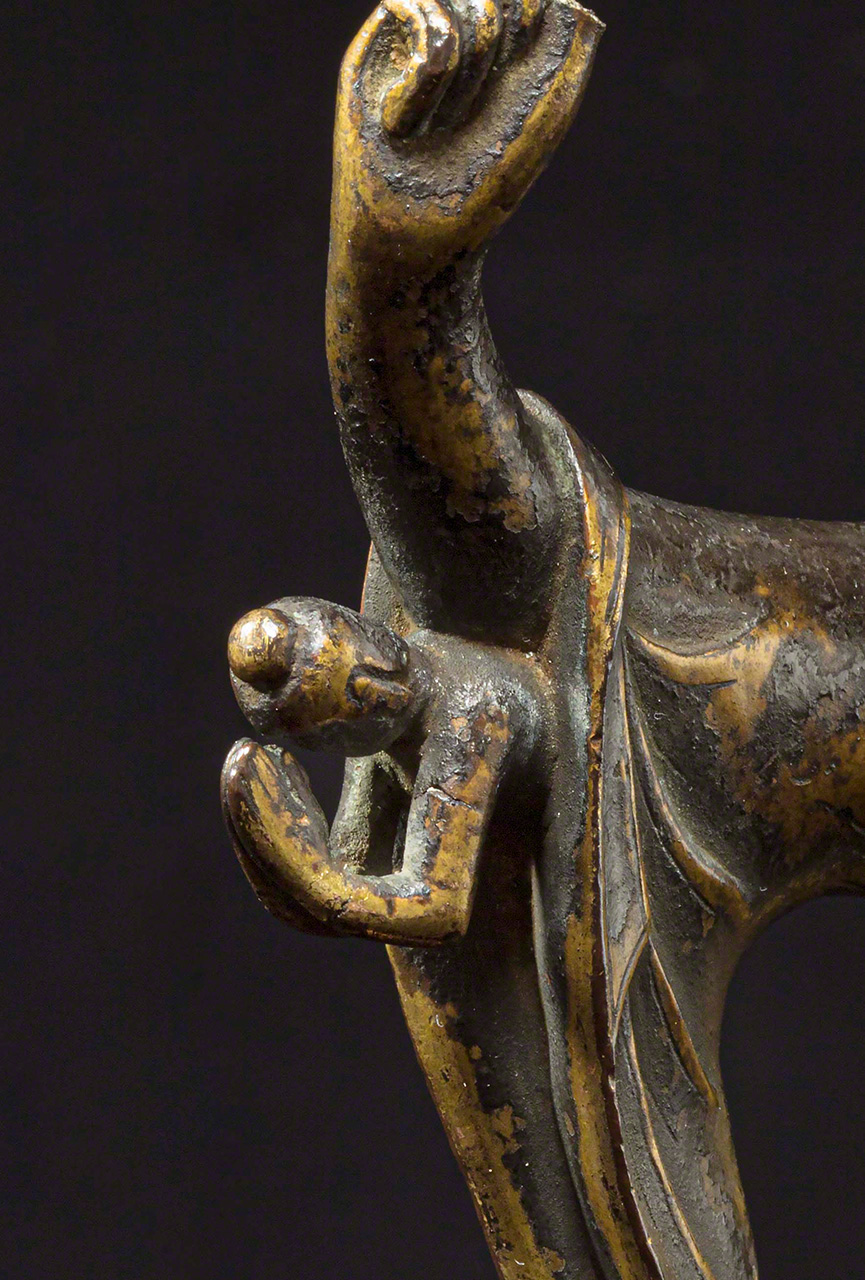
The Buddha appears from his mother’s right sleeve. (© Muda Tomohiro)
Maya, with her hair tied up in a double bun, wears a gown with flowing sleeves. The elongated face, the simplified expression of the features, and the abstract lines of the robes are typical of sculpture from the Asuka Period (593–710).
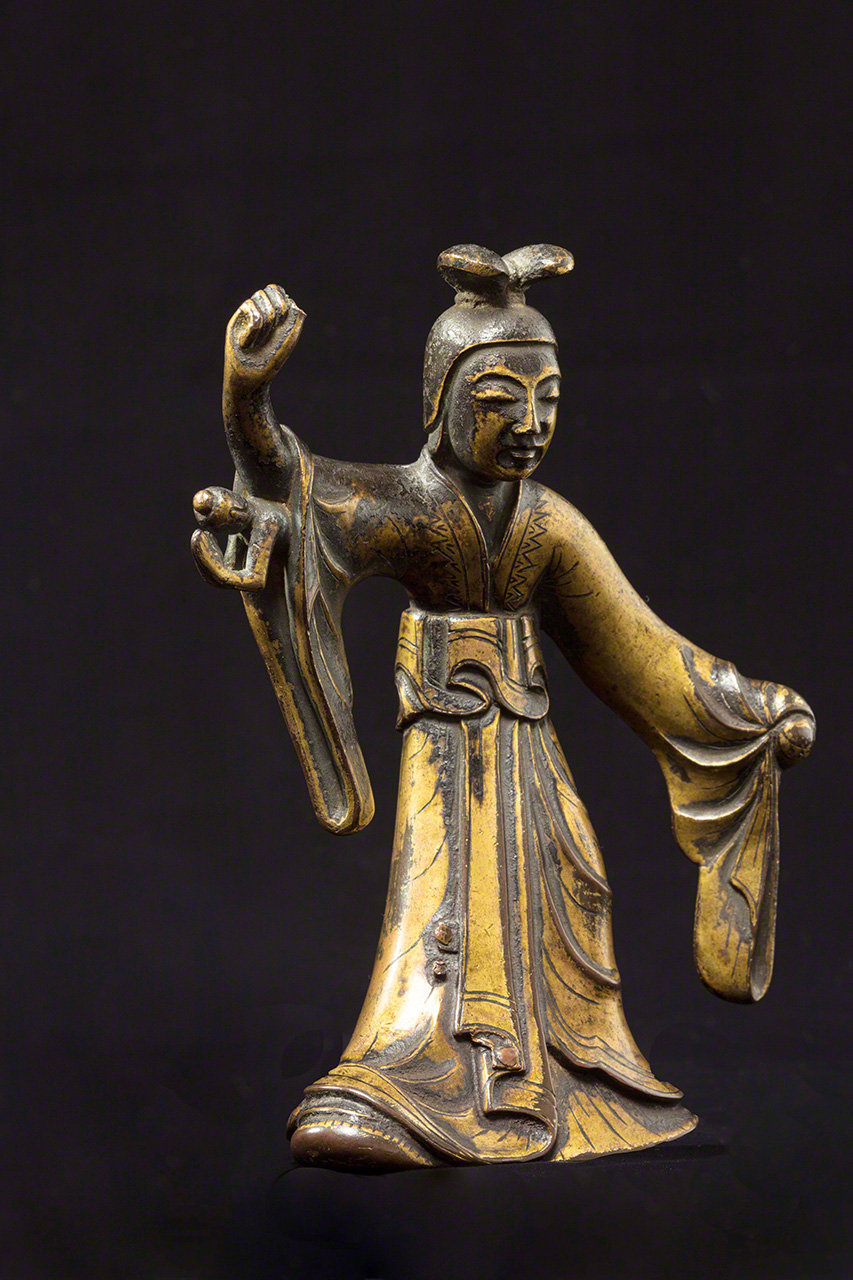
(© Muda Tomohiro)
The robes of the three heavenly attendants seem to flutter in the breeze, presumably to denote that they have descended from heaven to celebrate the birth of the Buddha. Holes are set into the bottom of the figures, suggesting that they were originally displayed independently in a way that made them appear to be flying.
These images belong to a collection of religious artworks known as the Hōryūji treasures. Around 300 precious items that belonged to the temple Hōryūji in Nara Prefecture were donated to the imperial household for safekeeping in 1878, and were bequeathed to the nation as important cultural assets after the World War II. It is thought that these particular figures were transferred from Tachibana-dera, a small temple in Asuka subsidiary to Hōryūji believed to have been founded (like the parent temple) by Prince Shōtoku, an important early patron of Buddhism. An eleventh-century catalogue of Buddhist images in the main hall at Hōryūji lists four items for use in the hana-matsuri (flower festival) at the festival of the Buddha’s birthday on April 8, when water or sweet tea is poured over an image of Shakyamuni as a baby. It is likely that the images were used in this ceremony.
This set of images depicts the same dramatic moments immediately following the Buddha’s birth that we saw earlier in this series, in the standing statue in which Shakyamuni holds his right hand to the heavens and his left hand to the earth. Legend narrates that the newborn Buddha took seven steps after emerging from his mother’s right side, before declaring “I alone am honored in the heavens and on earth.” This collection of exquisite images presents an interesting companion piece to that other depiction of the same legendary events.
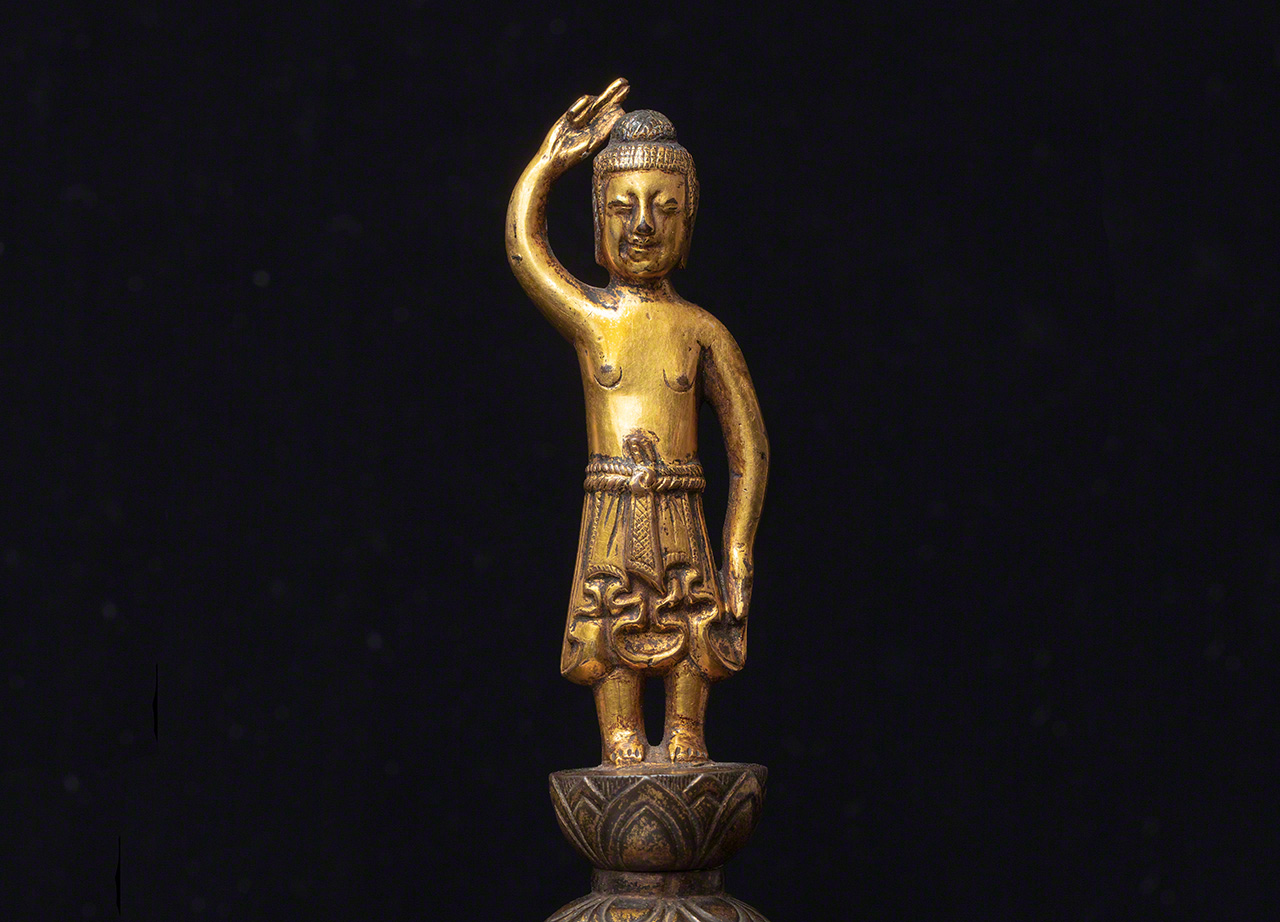
Standing statue of Shakyamuni at birth, Shōgenji, Komaki, Aichi Prefecture (on long-term loan to the Nara National Museum). (© Muda Tomohiro)
Maya Attended by Heavenly Beings
- Height: 16.6 cm (Maya), 11.5 cm–13 cm (attendants)
- Date: Asuka period (seventh century)
- Tokyo National Museum (visitors wishing to view it should confirm whether it is on display in advance)
- Important Cultural Property
(Originally published in Japanese. Banner photo: Maya, mother of Buddha, with the child emerging from her sleeve. Tokyo National Museum. © Muda Tomohiro.)
